"White and Fluffy" Daisy looks incredibly nice and has an incomplete charisma - it's not for nothing that the miniature flower has so many fans! Garden beauty wakes up with sunrise to delight you with bright and fluffy flowers. An interesting fact: the fragility of this plant is intake, in fact, a daisy is an unpretentious and very hardy plant. The article will tell about the peculiarities of its cultivation and teach how to properly care for the plant.
Margitchka many years in domestic gardening knows as a two-year-old culture. In the first year of life, the plant appears a dense outlet of the leaf of a shovel or egg-shaped leaf, and the next year the daisy will acquire several blossoms with a height of 15-20 cm with single flowers.
The plant whose name is translated from Greek means "pearl", has a very decorative appearance. You can talk about the flowers of daisies for a long time - they are unusual and beautiful. Inflorescences are quite large - some varieties grow up to 7 cm in the diameter. The middle of the flower is decorated with tubular petals, and the edges are tongue. Petals colors are a variety of: white, pink, bard, red. Also, daisies are divided into simple, semi-grade and terry.
Varieties of plants
Today, Daiste has many accumulations - the diversity of varieties and hybrids is based on the view of Bellis Perennis (which means "beautiful long-term"). By the way, the flowers of garden daisies in size are several times superior to the inflorescences of wild relatives. We will get acquainted with the most popular beauties who play the gardens of the star of the first plan:
- Pomponic daisy. A business card of the plant is a large number of small fluffy flower-buttons up to 4 cm in diameter. The total number of inflorescences on one bush sometimes reaches 40 pieces.
- Margarita Robella. The plant will charm you with a unique salmon-pink color of denselyah wine flowers. During the flowering period of inflorescence, so much that they completely hide the compact rosette of the leaves.
- Margarist Khabanner. Pretty large flowers (up to 6 cm) are notable for long petals. The flowering period starts in the first days of June. There are inflorescences of white, pink and red colors.
- Daisy Tasso. The plant has large spectacular inflorescences with petals, soldered among themselves. Flowers of red, white and rose colors reach a diameter of 6 cm.
Landing Margaritok
Landing in open ground is carried out in the period from June to July. Do not forget about the preliminary preparation of the boarding area: the land is dripped with a pitchflower, choose the weed herb and enriched with a compost. Then they smash the place where the blooming flower bed will appear in the future. From the surface of the soil you need to remove large stones and with the help of a robbery to break the major kisa of the earth.
Daisy seeds are seeded with a thin layer, following their uniform distribution in the soil. The plant loves the sunlight, so for its successful germination, seeds are only slightly covered with the earth and gently adjusted. From above on the soil you can pour a thin layer of humidiation or sand. In dry weather, fragile sprouts need moderate watering. They also need to be preserved from omnipresent slugs - collect pests or put a protective border. By the fall, seedlings will grow enough in order to transplant it to a permanent place. The distance between individual bushes should be about 20 cm. If the seedlings rose weak, do not touch them - they can be arranged in spring. Just remember that during the cold season, the seedlings are hiding from frost in reliable shelter, for the construction of which you can use a twig or husk. Pynik, if necessary, successfully replace oak leaves.
Another option of growing daisies - sowing the dued seeds of the plant. Drazhning means the coating of seeds for planting a special composition of trace elements, beneficial substances and growth activators. Such a protective shell gives seeds the shape of the balls. This trick allows Margaritka from the very beginning to quickly go into growth. In addition, the protective shell saves seeds from pathogenic microorganisms (especially from fungal) and some dangerous insects. Most often, the seeds treated in this way are sown in the soil in one thing. Draised seeds need more painting than ordinary. With a lack of moisture, the protective shell is completely dissolved, which is badly affected by the germination of sprouts.
Landing perennial daisies is possible through seedlings. By purchasing seedlings, be sure to pay attention to their leaves - they should not have the slightest trace of the presence of mildew or threshing. Weak seedlings with yellowed tips of the leaves categorically does not fit! Landing the daisies to open soil should be preceded by a thorough analysis of the selected place - is it quite well highlighted by the site, is it suitable for the plant of its soil?
The plant will feel wonderful to feel in the southern and eastern part of the garden. Daisy Loves the abundance of light, but also will not refuse. In such conditions, the plant develops the most quickly. It also contributes to the fertile, partially clay, wet and well-drained soil. If sand predominates among the components of the soil, and therefore the earth will quickly break up with moisture, it is necessary to ensure the seedlings of daisies with sufficient irrigation. Then their roots will not experience a lack of oxygen, but not dried. Beware of planting a plant into too alkaline or acidic soil - such a land will destroy the flower.
Perennial Margish Care
The carring care is surprisingly simple, and all because the plant from nature is very unpretentious. You probably had to meet the disinterested canvas of the semi-dog lawns, decorated with the husks of small "daisies" - daisies. There, there are no care for flowers at all, but it does not affect their gerbidity and duration of flowering. All carring care in this case consists in cutting it out of the heated baskets when haircut grass, which pushes a flower to even more intense flowering in the future.
However, the neighborhood of different lawn grass will never emphasize the elegant beauty of Daisy, as it will make a border, framing the flower, where the plant gets the status of a garden flower and receives proper care: regular irrigation, weeding and feeding. Old dynamic and dry inflorescences need to be deleted on time. This will increase the duration of flowering and prevent unnecessary self-access.
The lack of minimal care ends with degeneration of culture. "Pornish" large and terry daisies 1.5 - 2 years after landing suddenly begin to lose their attractiveness - their curtains grow greatly, the sockets become more dense and rude, and the flowers are noticeably minor. To prevent the development of such a sad scenario, daisies are divided from time to time and transplant. It is best to deal with this every year or at least 1 time in 1.5 - 2 years. Of course, you will have to work hard, but this is the only way to achieve annual flowering of daisies without losing decorativeness.
Features of the feeding of Margaritals
The first feeding of flowers, produce a weak nitrogen-potassium solution. The next time the daisy fertilizes when she is about to bloom. The plant is fed by a special fluid: in 10 liters of water are divorced in 2 tbsp. l. Nitroposki and drug agricola fantasy. Like the members of the Margish need to "sweep" several times a season. In addition, pay attention to the mixture for the preparation of which uses sulfate potassium, ammonium nitrate, superphosphate or infusion of a cowboat in equal proportions.
Uncomplicated, but regular care for the daisy will allow you to admire the magnificent and long-lasting flowering of garden "pearls" every year.
How to propagate Margaritku
In the wild, the daisies increase their number by self-sowing, but for anchored species, this method threatens the deterioration of varietal qualities with further degeneration. To preserve the purity of the variety, the bushes are transplanted separately. At the same time, they are subjected to a thorough inspection and complaim the flowers of poor quality.
Even newcomer can be reproduced by Margitch: there is nothing complicated to immediately hang them in the ground or to grow seedlings first. By the way, daisies derived from seedlings are distinguished by high resistance to temperature differences and influence of insects.
Seeds for growing new offspring daisies can be collected throughout the flowering. Collect them with faded dried in the sun flowers. When the planting material is enough, drink seeds into special containers with cells - 3-4 grains in the recess. You can get to the crop in the period from the beginning of the spring and until the end of the summer. To seedly unfolded and seed sprouts were able to break through the earth through the ground, a stable humidity should be maintained in the room with landing capacities, which will prevent soil drying with seeds. While the seeds do not completely germinate (and it will take at least 3 weeks), there must be cool in the room.
After the complete disclosure of the seedlings, the humidity is lowered to the maximum, after this, so that the soil does not dry completely. Sprouts are watered only in the morning. After 5 weeks after sowing, the seedlings are transplanted into individual pots and fertilize, entering the chelate of iron in the soil. Special attention at this time needs to be given low ambient temperatures and the root plant of the plant. If an actively growing daisy will have time to let deep roots before landing on a permanent place, in the future it will be hard to adapt in a new place.
In the open ground, the seedlings are transferred in August. The earthlings with the roots of seedlings are not cleaned to be additionally not injured the roots, otherwise the flowering period will not begin on time. Beautiful blossoms of Daisy thank you for the care of the next spring. Experienced gardeners advise: to bring flowering closer, seeds are planted in January.
If you decide to immediately put the seeds of daisies in open ground, wait for the earth enough. The most suitable temperature for the speedy appearance of sprouts from 20 to 22 0C. If everything goes according to plan, the first shoots will see about 2 weeks after landing.
Daisy Straight tolerates the cold season. It can even keep leaves and flowers under a thick layer of snow. The root system is considered the most vulnerable to low temperature. In order for the spring it remains unharmed, the peat is being added under the roots of young plants.
The reproduction of daisies with cuttings or division of bushes is a task for a professional. As a rule, they are resorted to these methods if you need to preserve the species qualities of a valuable variety of daisies.
How to protect the daisy from damage
Daisy has a sufficient immunity, so as not to deliver the owner of problems in the form of an exhausting struggle against pests and disease diseases. Nevertheless, garden beauty is not insured against the following diseases:
- gray rot;
- rust;
- puffy dew.
To suppress the life and reproduction of pests, you need to take advantage of special insecticidal agents. According to the reviews of experienced gardeners, the most effective are "XOM" and "Topaz". The first drug is applied at the rate of 40 g per 10 liters of water, when using the second, the proportions of 4 ml per 8 liters of water are adhered.
The most dangerous insect for daisies consider the caterpillar, which eats the leaves of the plant. The most effective method of struggle remains annoyingly manually inhalation of pests from flowers. On large plantations, daisies are solved this problem by spraying biological insecticides: Lepicid, Bikol, Arrivo.
You also need to protect the flower from the paw-tick. The main sign of the presence of the pest is considered yellow noted on the greenery of the leaves. Over time, these stains are discolored and become more noticeable. Insects themselves, the size of which does not exceed 0.2 - 0.5 mm, are localized in the root part of the socket - there they form a thin, almost invisible, cobweb. The appearance and propagation of the spider tick contributes to too dry air or high temperature.
The pests at the initial stage of the lesion eliminate, processing the leaves of the daisy with soap solution and mineral oil. A strongly pronounced disease is suppressed with special preparations: akarin, vertimek, fitoverm.
How to arrange a margarist in the garden
Different plants are blooming from the middle of spring until the first frosts. With the help of daisies, it is easy to decorate the alpine slide, a mixtore or flower bed.
These miniature and very cute flowers are definitely the highlight of the minimum care gardens. The creation of grassmes for the Mauritan lawn never costs without a daisy. As soon as its seeds are penetrated into the soil of the lawn, it is rooted in the garden thoroughly, every year turning the mastered plot into an attractive colorful meadow. To save the daisy on the lawn as long as possible, you need to make grass from time to time. If this is not done, the flower is gradually degenerated. For a long time to occupy a dense dend of the stripped lawn for only the usual daisy. In order to preserve the spectacular view of the dense-terry varieties, you need to have a permanent care.
The same perfectly daisy looks everywhere: in a complex composition of flower beds, in a live border along the garden tracks, in the strip in front of higher colors. By the way, Daisy is one of the first wildflowers that settled in cultural gardens on an ongoing basis. Today she is a worthy companion of tulips and daffodils. Very spectacularly looks like a plant in the frame of flower beds or Rabata. In the creation of a flower arbitration for flower beds, it is best to use a green rug of terry daisies with a low sheet rosette. Often, the daisies and terraces are decorated with a daisy, where it is planted in a variety of pots and tubs. For many years now, a small cute flower has made the design of our gardens even more interesting and colorful - is it possible to resist such margaries as in the photo?

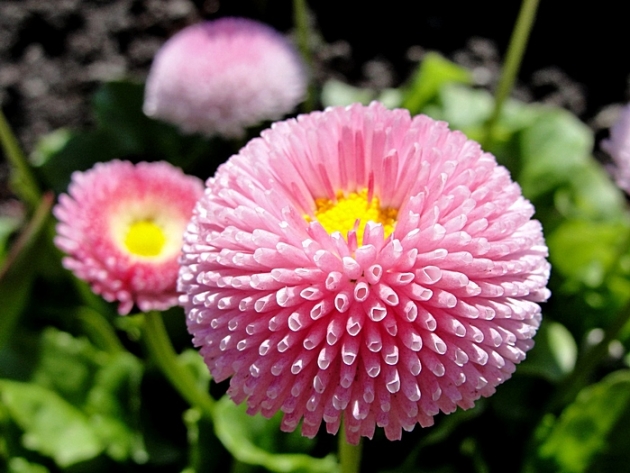
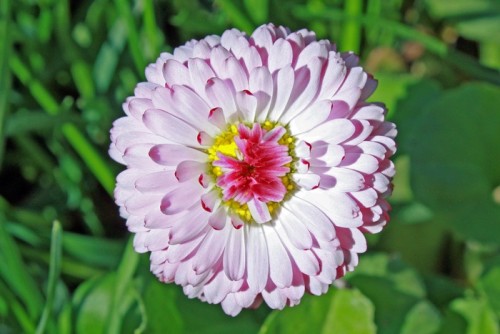
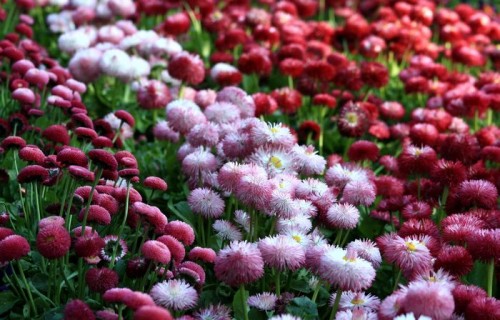
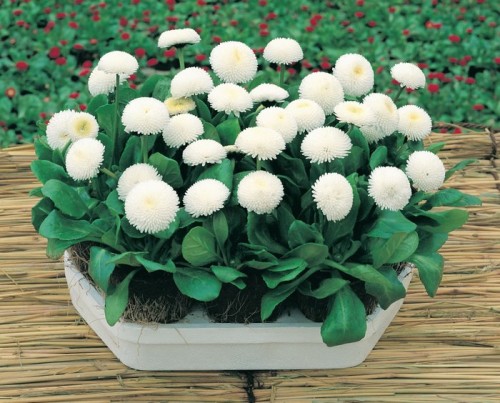

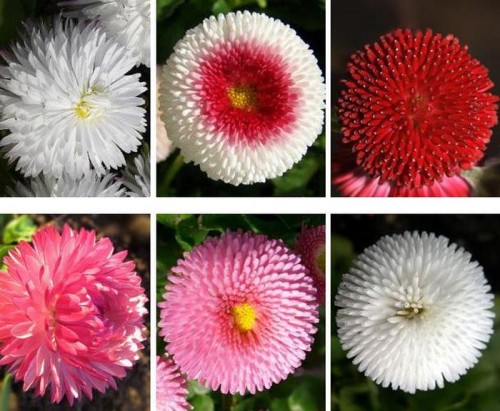
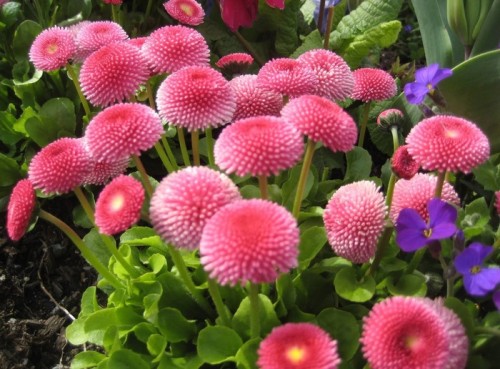
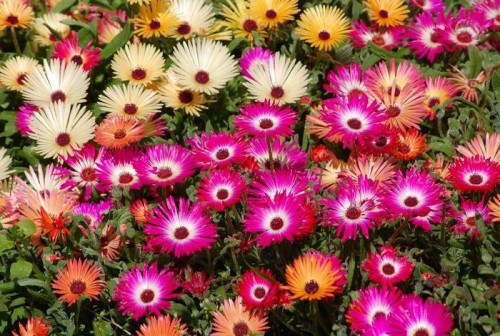
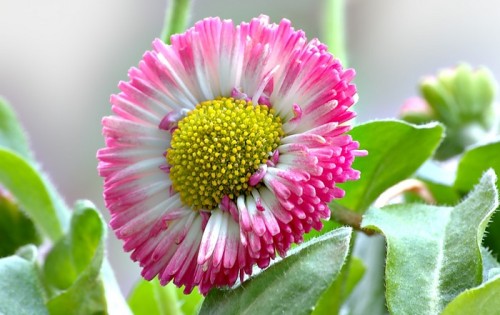
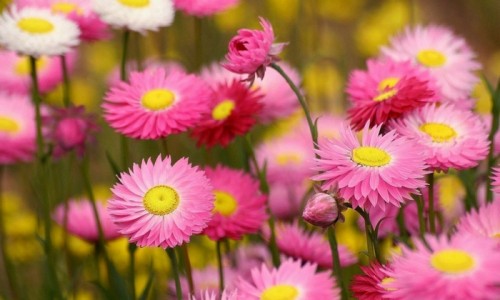
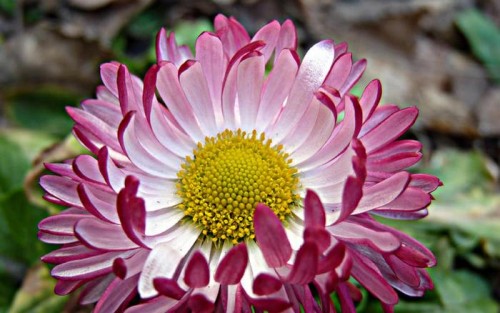

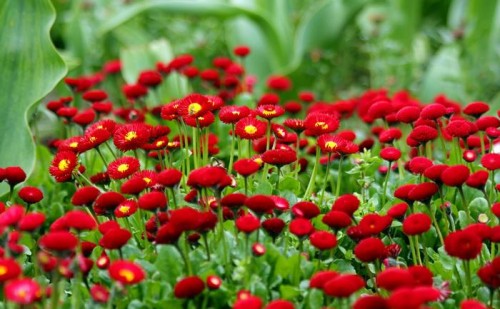
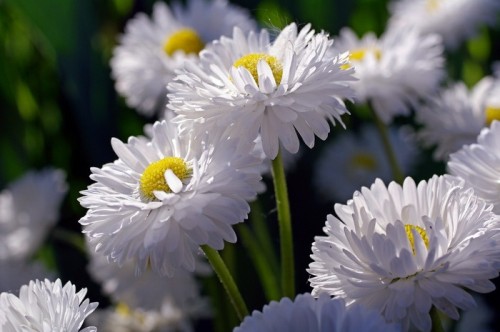
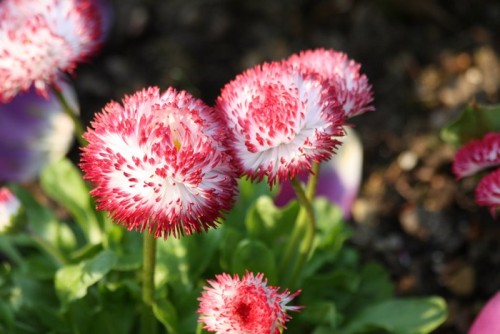
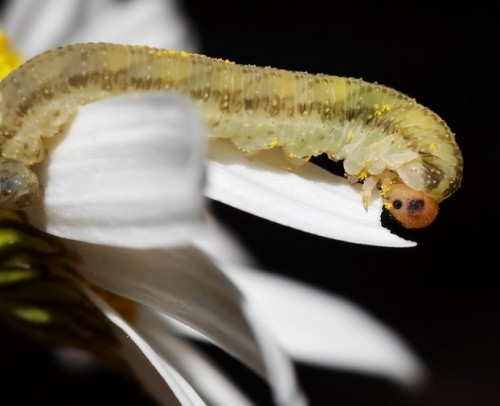
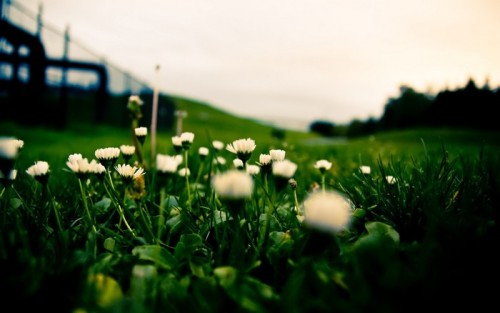
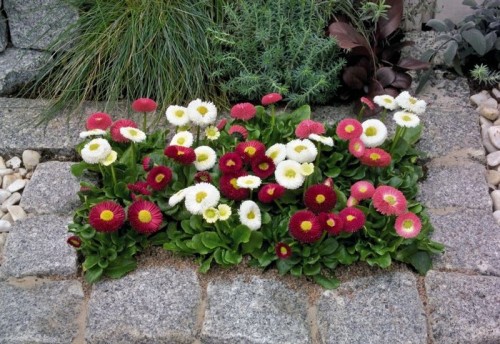

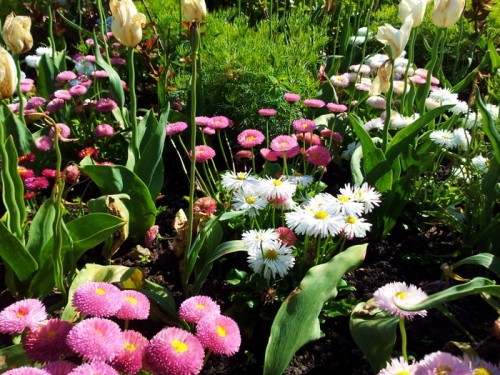
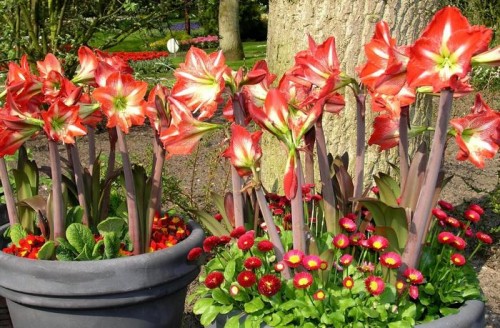
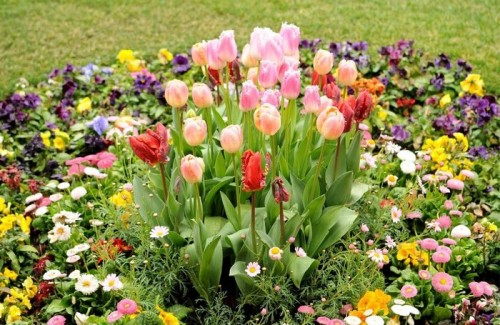
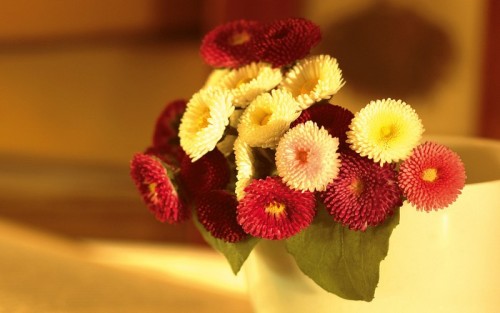












 Start a discussion ...
Start a discussion ...